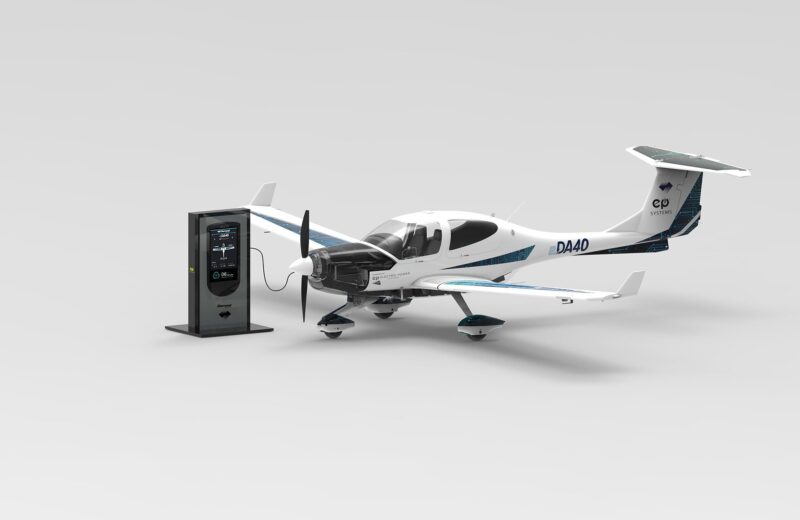Revolution.Aero Uplift: Safran’s ENGINeUS are Diamond’s best friend

exc-6284ae566e6e936cdeba9566
“In this race for the electrical revolution it is really important to start early and run fast,” Hervé Blanc, executive vice president and general manager, Power Division, Safran tells Revolution.Aero.
The French engine-maker has just been selected by Austria-based, Diamond Aircraft to provide the electric smart motor for its eDA40 trainer. It will be the first EASA/FAA Part 23 certified electric aircraft with Direct Current (DC) fast charging.
Most engine OEMs are investing in electrification, so what made Safran stand out from the crowd? Safran devised its first electrification roadmap in 2016 and designed and built an electric motor in two years. That motor, the ENGINeUS 45, has now accumulated hundreds of flying hours. “Six years ago, we launched the key technologies we use today in the ENGINeUS family,” says Blanc. “We are at the third generation of ENGINeUS motors and the technological building bricks we are integrating into the system are between second and fourth generations. So, it has significantly evolved and performance has increased dramatically.”
Diamond says that a well-advanced certification process made Safran the logical choice to provide propulsion systems to the eDA40. The certification of the electric motor is planned for mid-2023. Basic EASA certification for the eDA40 is expected by early 2024 at the latest.
Although the eDA40 is a training aircraft, Diamond tells Revolution.Aero it plans to electrify the fleet. “The eDA40 is just the start and the knowledge we gather and technology we use and implement will help us to scale it for our other aircraft.”
From an aircraft training perspective, a huge number of airports across Europe and the US are constrained by the relationship with the surrounding neighbourhood. “The people that live close the airport do not want noise or pollution,” says Blanc. Electric aircraft produce some 70% less noise than their piston counterparts.
“Now these airports know that electrical aircraft are a solution that exists and is viable, all they want are these aircraft,” says Blanc. “They tell us: If we want to operate efficiently, if we want to operate in all the airports in which we want to, then we absolutely need to have a low-noise, green aircraft – which simply means an electrical aircraft.”
But electric aircraft are expensive, right? Indeed, an electric aircraft, much like an electric car, will set you back further upon initial purchase. “But when it comes to operating costs, especially if you use the aircraft quite often – around 1,000 hours per year – you will see in a few years how much cheaper it is to run than a thermal aircraft.”
As well as cost, electric aircraft also come out on top in terms of availability. “Although managing an 800-volt DC system is a real challenge, once you have the right technologies in place such a system is almost always available [to operate]. Every time you need it, it’s here to support you,” says Blanc.
Diamond has been building aircraft since 1981 and that experience has come in handy during development of the prototype eDA40. The firm is converting a regular DA40 NG with a diesel-principle combustion cycle powertrain to an all-electric airframe, with minimal changes to the airframe itself. By doing so, Diamond saves on the development and certification effort as well as keeping a path open to retrofitting existing airframes.
The battery system, for example, will be installed external to the fuselage in a belly pod. This means no changes to the fuselage and wing structure.
Installing the electric powertrain in the front of the aircraft is very similar to conventional installations and will be connected to the fuselage via a “traditional engine mount”, says Diamond.
The electric powertrain installation is also simpler than a combustion engine, because it does not require many of the subsystems to operate – there is no need for a liquid cooling system, oil system or air induction system for example. “The real challenge, but similar with other aircraft design projects, is to balance all parameters like payload, weight, power, endurance and cost as well as to make the right compromises,” says Diamond.
The eDA40’s first flight is scheduled for the end of 2022 at Diamond’s engineering headquarters in Wiener Neustadt, Austria.
For Safran, electrifying aerospace is absolutely strategic, says Blanc. “Meaning that in the future, if Safran wants to be the engine maker that we are today, we need to master electrical and hybrid solutions. We have nothing to lose, we have good technologies that we can use to create new business. It is just the right way to go.”
Whilst electrical propulsion systems are not yet a significant part of Safran’s business, if you consider the wider move to electrification — avionics, cabin technology etc. — it is a multi-hundred million dollar business. “So, it makes a lot of sense to develop this activity.”






